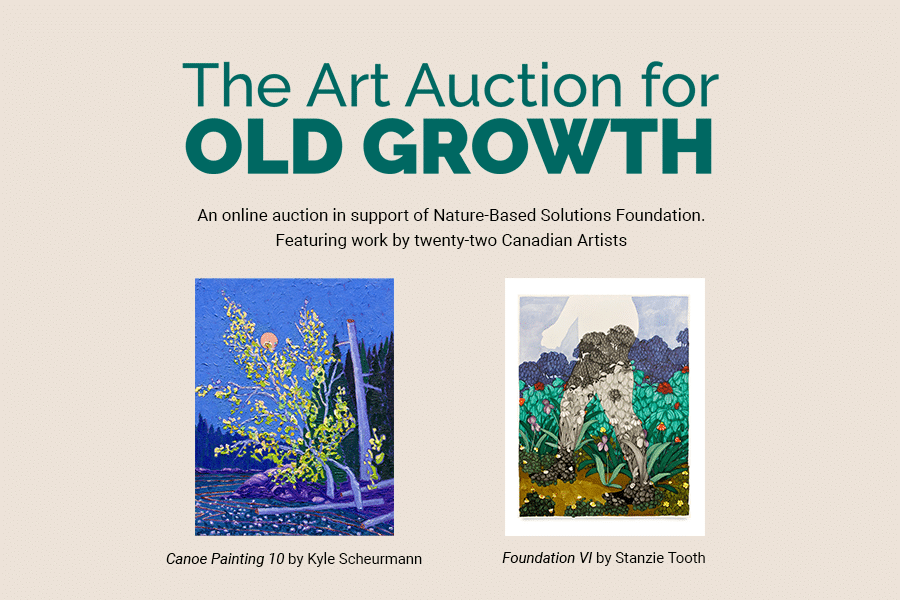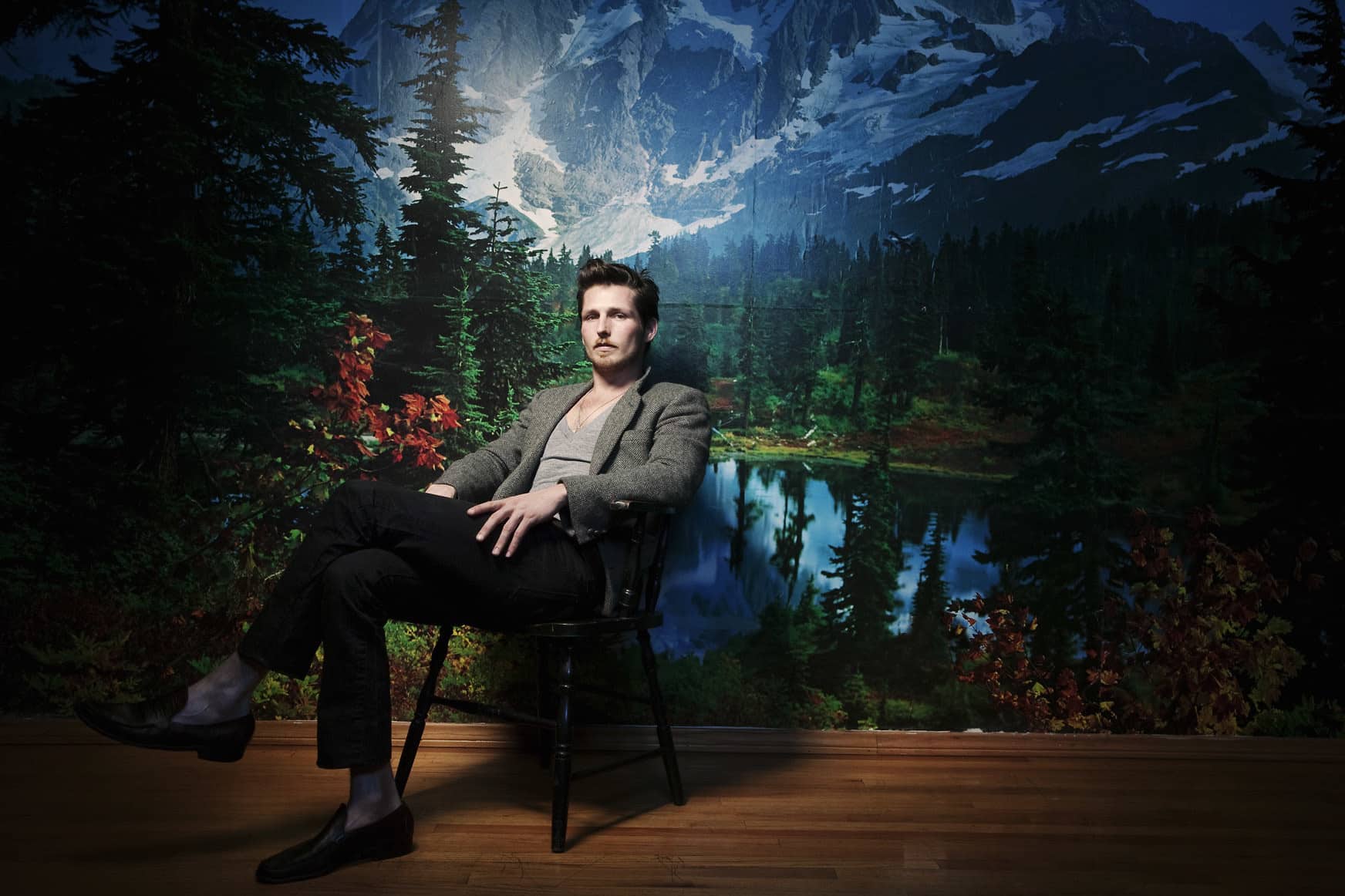Can you tell us about yourself and what prompted you to start the Art Auction for Old Growth?
Mein Name ist Kyle Scheurmann, I’m a painter and environmentalist making work about the many ways the climate crisis is affecting our land and our people. My paintings most often depict fires, floods and deforestation–as well as representations of the animals, birds, and activists caught in the chaos.
After living at the Eden Grove Artist Residency in the summer of 2021, making plein air paintings about some of the last strands of valley bottom old-growth forests left in BC, it became clear that there was more I could do beyond the work on the ground to help save those forests and our most endangered ecosystems.
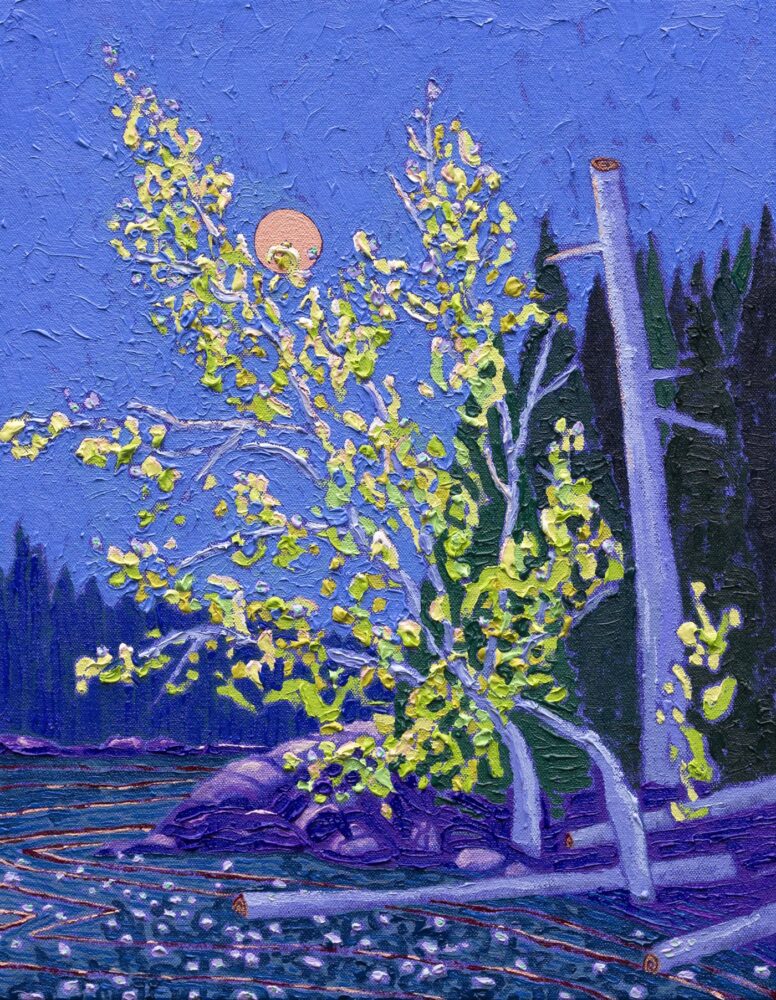
Although my paintings often center on the west coast, most of my opportunities to exhibit my work happens in Toronto. That’s where a majority of my art-world community lives. As a means to draw attention to this issue on a national scale while simultaneously raising money to help with legal conservation efforts of old-growth forests, I asked 20 artist friends to each donate a painting that we could then sell at auction. All proceeds from this initial auction went to the Nature-Based Solutions Foundation and their pursuit of acquiring permanent protection for ancient forests.
Every person I asked to donate artwork to the auction said yes and by fall of 2022, we had launched our first round of the auction, growing the community of Forest Protectors across the country and raising awareness about the crucial need to protect old-growth forests.
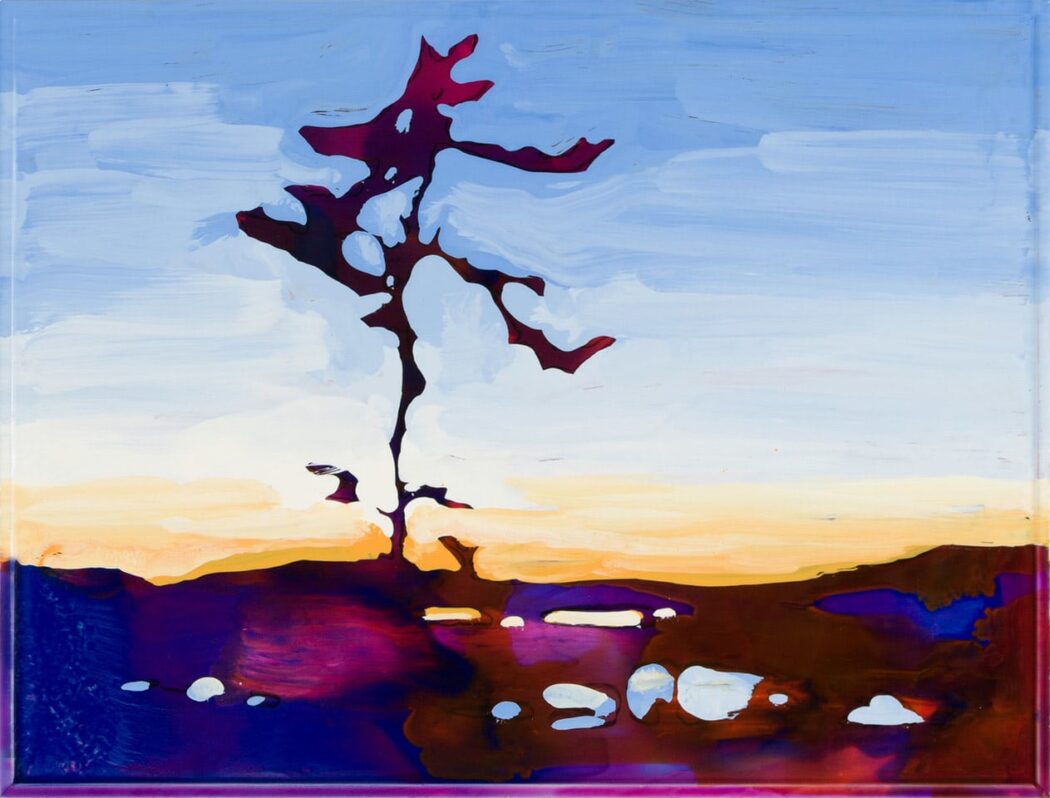
Can you tell us about Nature-Based Solutions, the not-for-profit that the auction raises funds for?
All money raised by the Art Auction for Old Growth goes to the Nature-Based Solutions Foundation (NBSF).
Created by some of British Columbia’s (BC) most experienced conservationists, NBSF’s mission is to safeguard the most endangered ecosystems in Canada by addressing key conservation funding gaps that have historically hindered their protection. Notably, NBSF helps establish new protected areas by working with land-embedded communities and supporting their transitions from resource industries to resilient conservation-based economies so that nature is worth more standing. This is the critical pathway towards achieving meaningful protection for the most endangered ecosystems, like the iconic old-growth forests of BC.
This type of approach is known as “conservation financing” and has been used with great success in the past, playing a foundational role in establishing the Great Bear Rainforest on BC’s central and north coast.
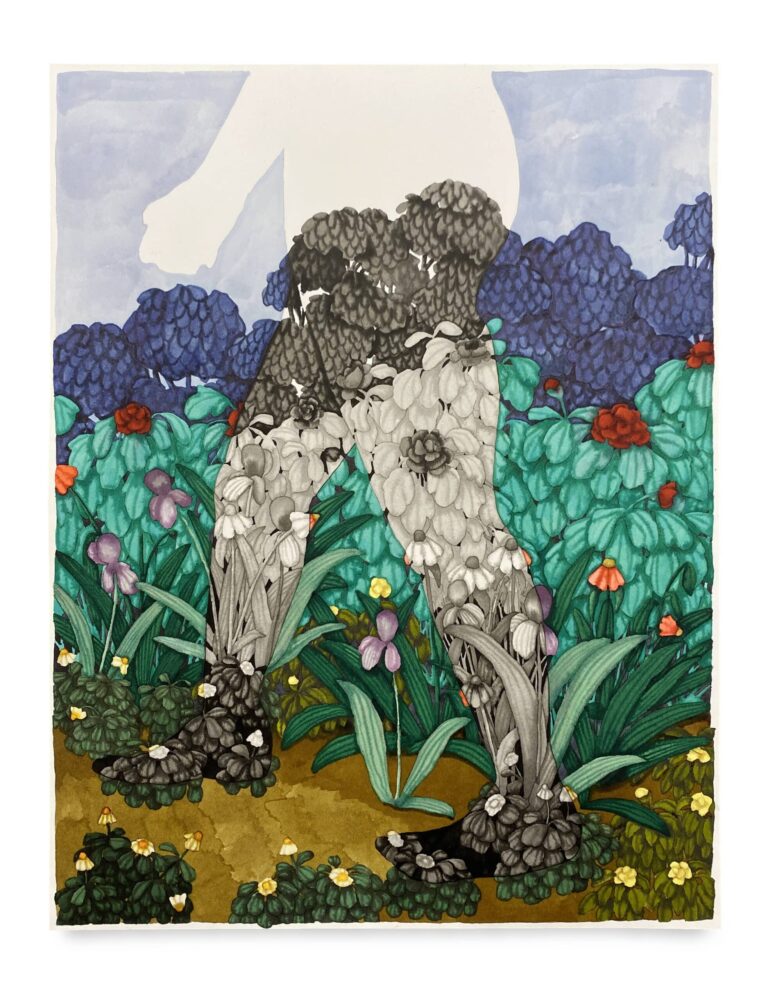
Why is this type of preservation so important right now?
BC contains some of the world’s most magnificent old-growth forests, where trees can grow as tall as a skyscraper and as wide as a living room. These forests are also important repositories for biodiversity and support a suite of other essential services, including habitat for endangered species, climate regulation, flood control, mitigation of extreme wildfires and droughts, clean water, wild salmon, First Nations cultures and well-being, tourism and recreation industries, enhanced quality of life, and more.
Intensive industrial logging has vastly diminished what remains of BC’s unprotected old-growth forests. Today, less than 8% of the province’s original big-tree old-growth forests are left. For the first time, a policy window has opened that provides an unprecedented opportunity to secure permanent protection for the most at-risk of these forests. Before this protection can occur, critical conservation funding gaps need to be addressed. This includes ensuring that First Nation communities–who are the legal decision makers on how land is used in BC–have the financial support to offset the loss of old-growth logging revenues, build capacity to plan for new protected areas, and develop sustainable and resilient economies that thrive alongside nature.
These ancient forests can store more carbon per hectare than the Amazon rainforest, and are a crucial part of limiting the effects of the climate crisis across the world. In Canada, we have a global responsibility to protect these forests that fall within our borders. The climate clock is ticking and the resource extraction industry continues to liquidate these forests at alarming rates
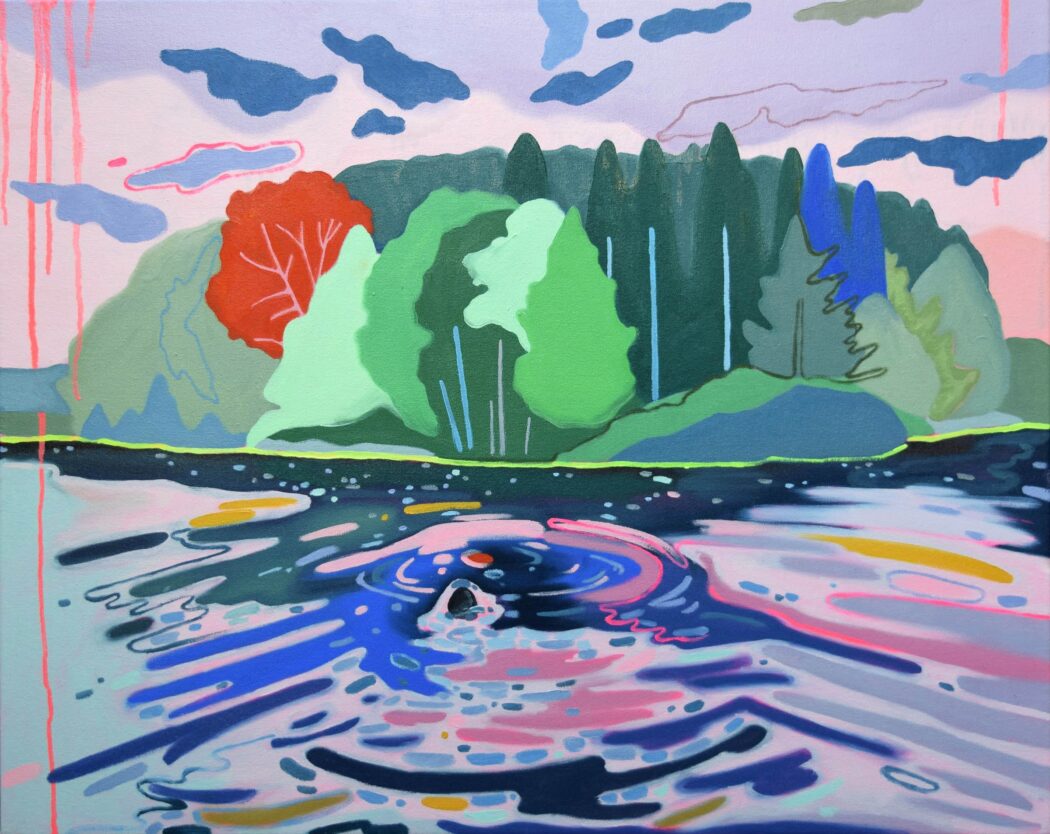
Tell us how the auction works–how can people get involved?
The 2024 Art Auction for Old Growth is live from September 19th to 26th, featuring work from twenty-two artists based throughout Canada. We are an exclusively online auction to encourage people from across the globe to both donate and bid. We operate on the Givergy auction platform so that people can feel secure when bidding on artwork or making direct donations to the cause. You can register on our auction website now to bid, preview the works of art, and be ready for when the auction opens.
All participating artists have generously donated 100% of the proceeds from their artworks and we have received incredible promotional help from the galleries that represent them in getting out the word.
Once the auction has closed, we work directly with the artists and the winning bidders on each piece of art to arrange shipping or a local pickup of your new artwork. Winning bidders are responsible for the cost of shipping the art.
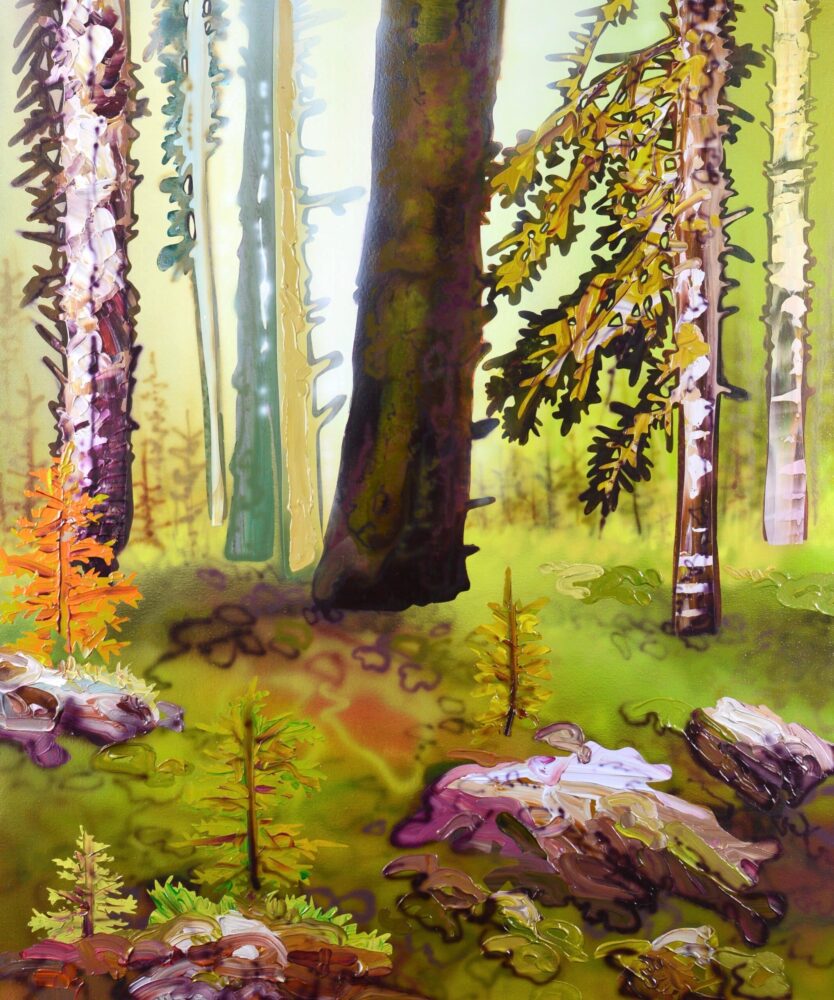
How do you select the artists for the auction?
In the first year, all the artists were people that I knew personally in some way and who made art about landscape or the environment. Some were very close friends, some were colleagues I’ve worked with in the art-world before, and some were artists I’d maybe only met once or twice but were artists whose work I respect and admire.
As soon as we went public with the promotion of the auction, several more artists began to reach out and offer support. By the second year, we had turned over more than half the roster of artists with new people, further growing our community of artists standing up for the ancient forests. The same amount of new support and outreach happened in our third year and now we’ve turned over half the roster again.
The community we have created has grown organically in such an encouraging way. We have participants in some of the biggest galleries in Canada–including the National Gallery of Canada and the Vancouver Art Gallery. There are artists representing commercial galleries from right across the country.

Can you tell us about any other resources about old growth conservation?
I recommend the NBSF website as a good place to start: https://www.naturebasedsolutionsfoundation.org
The Ancient Forest Alliance website also has great resources about some of the biggest trees and how to find them: https://ancientforestalliance.org/
